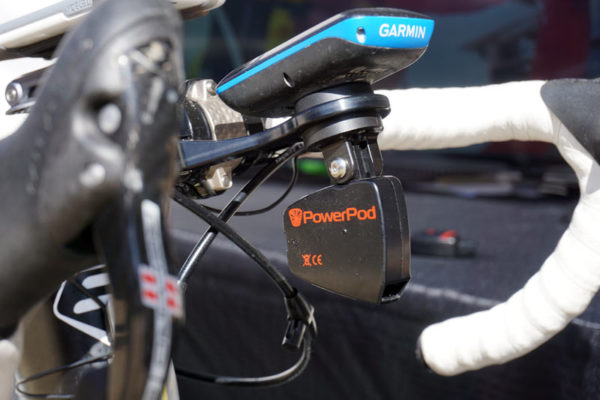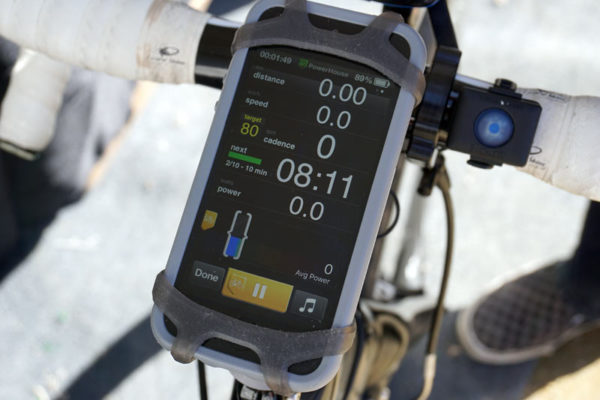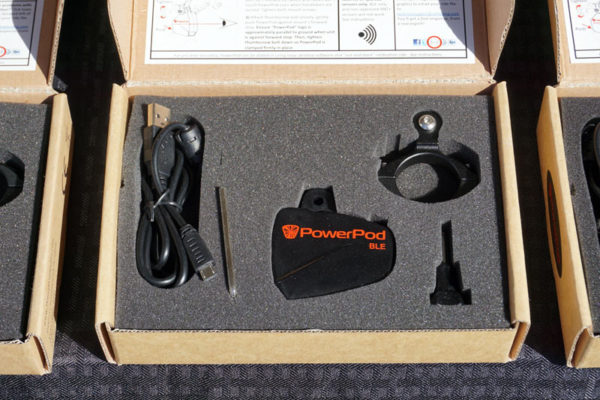
PowerPod has upped the ante for low cost power meters by adding the PowerHouse app to help you start training with power.
Their standard unit is a simple handlebar-mounted power meter that comes with ANT+ activated. Keep reading for tech details on how it works, very interesting. The device starts at $299, but what’s new is the Bluetooth unlock bundle that includes access to the PowerHouse app. The device has the BLE hardware on board, but the upgrade bundle purchase is required to activate it… and that gets you their new PowerHouse training app with courses designed by Hunter Allen…
The PowerHouse app makes power training plug ‘n play. You don’t have to study anything, figure out how to use power, or even calculate your training zones. It does all that for you. How? When you first get the app and connect it to the PowerPod, it’ll put you through an FTP test. There are 20 minute (better) and 5 minute (if you know you’re out of shape) tests built in.
Within the app there are six training plans to start – three specifically for cyclists and three for general fitness – with plans to expand that to include things like preparing for your first century and other specific goals. The FTP test and all training programs are developed with well known coach and Training Peaks co-founder Hunter Allen (check our podcast interview with him here). The app is designed to make power training as easy as possible and eliminate any barriers to use; it does it all for you. They admit it’s aimed more at the new user, and they’re happy to see you graduate to more advanced training plans. But for a $25 upgrade, it’s a cheap way to introduce power training and learn the basics.
Hardware-wise, it’s the same unit they announced at Eurobike, but here’s the quick run down of how this works:
The PowerPod is essentially your Black Box. It uses a combination of wind speed, actual wheel speed (from an ANT+ speed sensor, which is required because GPS speed isn’t accurate enough), acceleration, incline, and bike+rider system weight. From that, it can determine your power output.
They offer a $29 speed-only sensor, or a $50 speed-and-cadence sensor package.
As is, they say it’s the most simple power meter you can buy. But it can get super advanced, giving you metrics you can’t get out of any other power meter. There’s an optional high-accuracy calibration, called the “Out and Back” that puts its accuracy on par with high end crank or hub based power meters. Without this, it uses aggregate data to be mostly accurate; so you don’t have to do it, but it is recommended. And if you want to get even more geeky and figure out coefficient of drag, wasted watts, and more, you can pair it with a traditional power meter and let it do the math to figure out where you’re losing power and let you test position, clothing, gear, etc. to maximize your aerodynamics without a wind tunnel.

